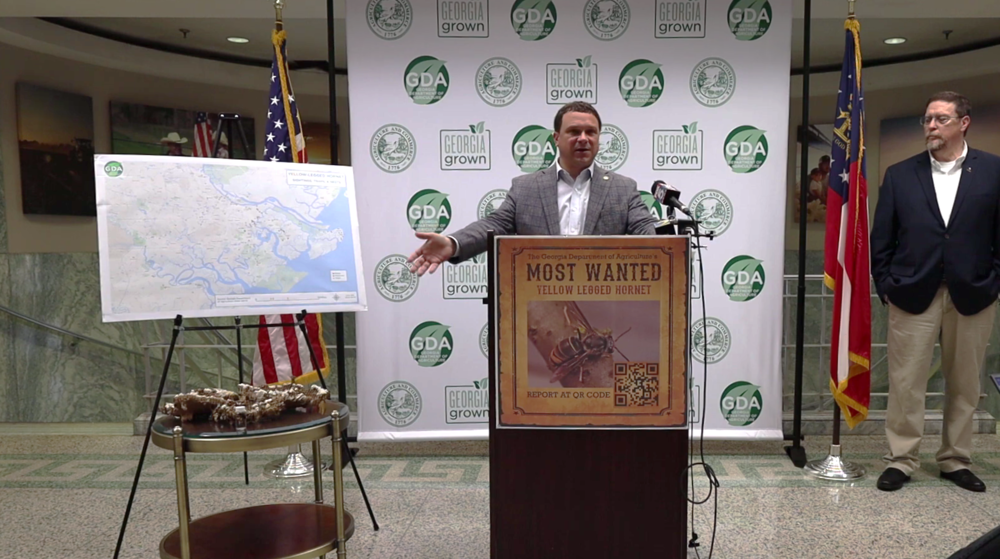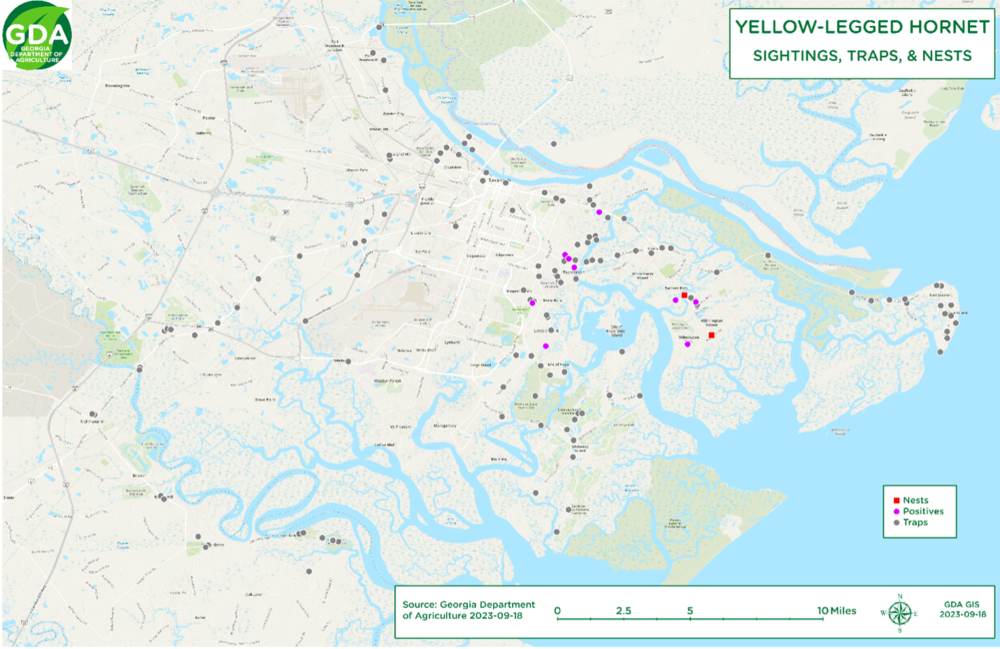
Caption
Georgia Agriculture Commissioner Tyler Harper speaks at a Wednesday news conference in Atlanta, standing next to a portion of the second yellow-legged hornet nest and a map of sightings in Chatham County.
Credit: Georgia Department of Agriculture


